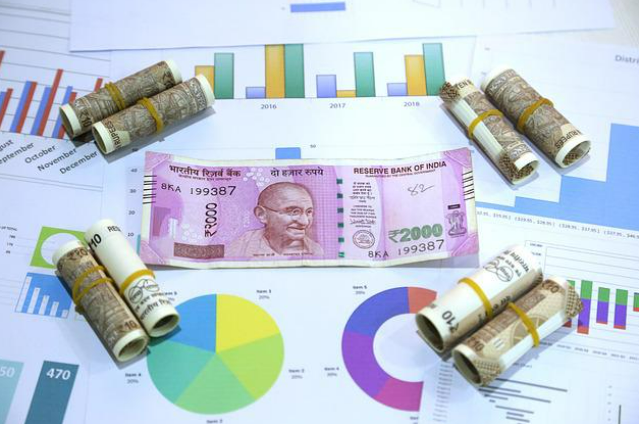
For starters, Economics is what one defines as the management of the economic facets, ranging from the discrete units of one's household to the aggregate wealth handled at a national stratum. The purpose of distinguishing the fundamental resources from the collective assets of a nation as a whole for simpler and accurate analysis, has led to the use of the terms Microeconomics and Macroeconomics. There lies a difference between the two economies however, both are interlinked and both are equally impacted. If there is an upsurge or a decline at either level, the other economy inevitably encounters similar changes. For example, consider the Covid times. The lockdown imposed to mitigate the spread of the virus, was an impediment to individual economic activities of earning which alternately culminated with a depreciation in the state revenues.
THE MICRO AND MACRO RELATION
Macroeconomy represents the resources of an entire country which can only be established by contributing from a microeconomic level. Take an example of the ‘Clean India mission’- in order to keep the country clean, the common folk had to begin with themselves by ensuring proper waste disposal and segregation in each household. Similarly, total national capital is determined by the performance of individual variables. There have been myriad macroeconomic issues since the past few years that pose a serious challenge to tackle in a short period of time. Some distinct ones in the Indian economy include Unemployment rates, inflation, Gross domestic product(GDP), national revenue, and globalization of the Indian economy. And they can be resolved only via microeconomic solutions. Here’s how:
- High Unemployment rates have been one of the many persistent problems in the Indian economy. It is recognized as the cumulative number of jobless people in the country mainly due to the unprecedented rise in population with only a handful of opportunities. The fixing must be done at the basic structural units like factors such as inaccessibility to capital-intensive technologies, agricultural dependence, lack of skill development e.t.c. Firms may come up with the use of labor-intensive techniques to create conditions conducive to hiring workers in local shops or industries. The rise in flexible labor markets that incorporate innumerable labor departments, makes it easier to rope in unemployed people thus subsiding the unemployment rates. Since most of the Indian population resides in rural areas, it is beneficial to provide training and set up facilities for rural industrialization and employment that would also enhance production levels for the country. Moreover, motivating individuals for self-employment may give rise to business markets, again rendering job vacancies.
- Rising price levels in the economic industry, commonly known as inflation, is a macroeconomic outcome of production rates at the micro level, from raw materials to public wages that have escalated demands for goods. This is causing a drain on the country’s monetary value. Inflation occurs when the common folk is willing to spend more on the supplied goods, with a view to having adequate financial means in the present. The government may try to increase interest rates or impose taxes but it may still continue until the people themselves realize the need of saving money instead of using it. One microeconomic solution to the issue is to spread awareness among the public about the importance of saving the acquired wealth that would serve as a means of assistance for any future contingencies. Encouraging individuals to save money in local banks with good interest will contribute to curbing the rising price levels. In addition to it, an increment in the supply of commodities by small industries will also help in reducing cost rates for tackling the problem.
- GDP- Gross domestic product determines the total amount of finished goods and services produced within a country. The decline in GDP graphs has been a consequence, especially during the times of the nationwide lockdown. To gain a good GDP rate, a country’s exports should essentially be higher than its imports. The answer to elevating India’s GDP is by expanding the size of the workforce, which can be achieved through the improvisation of their skills. Also, strong growth in production is needed that relies on the output produced per hour worked by the workforce leading to the development of per capita GDP and economic growth. Agriculture in India is gradually climbing up the ladder of advancement with the introduction of new technology. Enlightening the importance of agriculture is one crucial way of promoting nationwide GDP with the increase in raw materials.
- Globalization is the phenomenon of converting the national economy into a global economy by the expansion of economic boundaries. And the only way of globalizing is through advanced communication and connection of the cultures and products of each country. The same solution applies here; industrializing the local areas. Moreover, one more plus factor can be the dissemination of the cultures of India like classical dances and festivals. As a means of representation, individuals can preach their cultures worldwide that draw interest and funds, adding to the country’s revenue. Many Indian companies have entered into foreign collaborations in the past that have proved a success in globalization.
CONCLUSION
So, just like a building that stands erect on its pillars of foundation or the application of simple mathematical functions to form complex arithmetic sums, microeconomics forms the roots of macroeconomics. It is the aggregate of individual quantities, thus a change required on a large scale calls for amendments on a small scale. Once developments begin at a microeconomic level, progress appears at the macroeconomic level at a slow rate, but eventually, when continued for a prolonged period, success in the country’s economic development will undoubtedly be attained.
